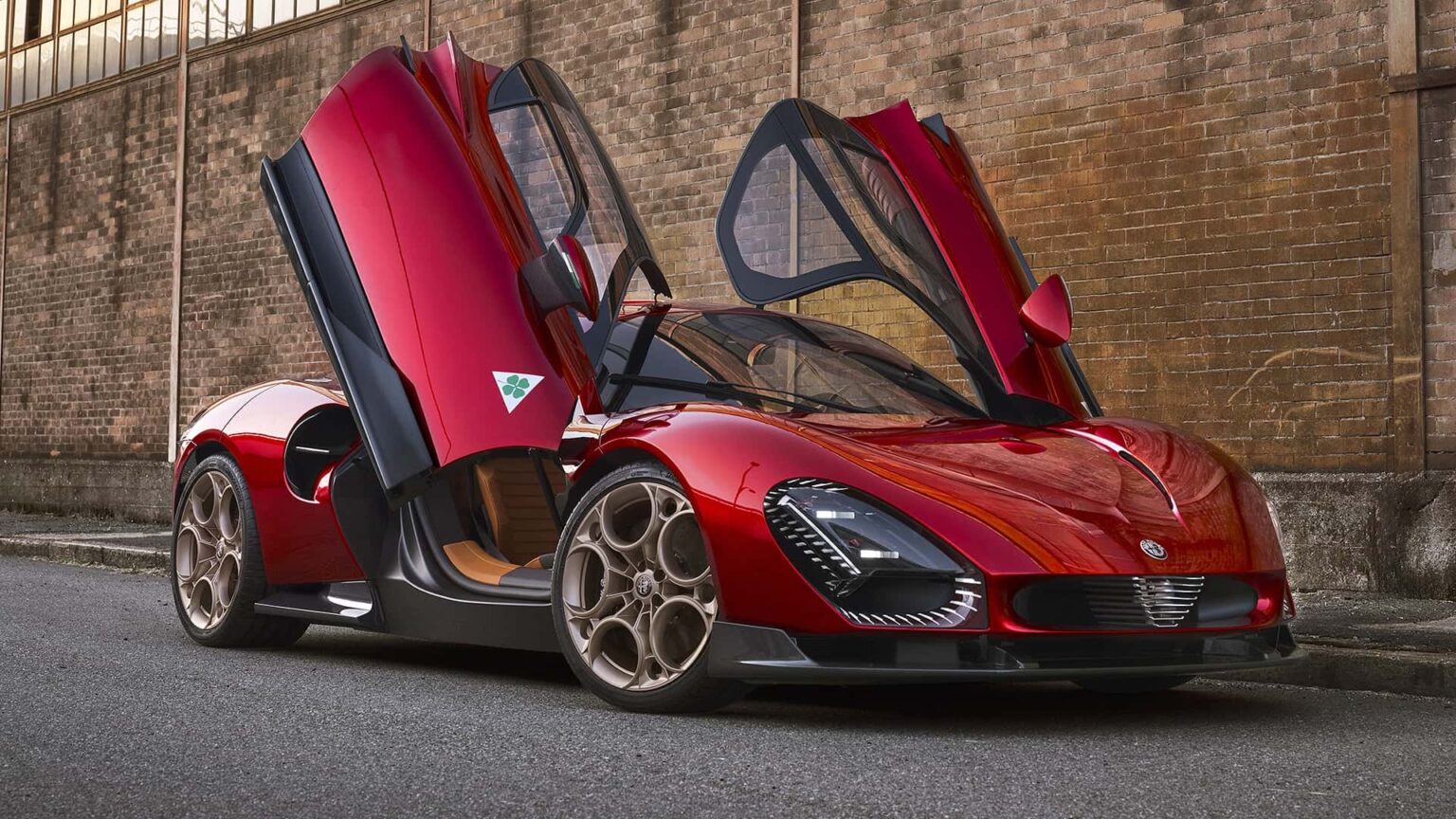14. That’s how many brands are under the Stellantis corporate umbrella. Some are performing better than others. Alfa Romeo is somewhere in between. While it’s nowhere near the level of BMW, Mercedes-Benz, or Audi, sales are flourishing. In the first half of 2025, global deliveries rose by 20 percent. Junior, the brand’s entry-level model, is shaping up to be a real success, with more than 45,000 orders already placed.
Alfa Romeo’s CEO, Santo Ficili, spoke with Car Magazine about what the future holds. The man in charge of the fabled Italian brand called it the “only premium brand we [Stellantis] have.” While that statement might seem confusing, it’s worth noting that the automotive conglomerate sees Maserati as a “luxury” brand, competing in a higher echelon. Incidentally, Ficili has also been tasked with running Maserati.
Photo by: Alfa Romeo
The Turin-born executive is enthusiastic about Alfa Romeo’s agenda, with “new models that we will prepare for the future.” He didn’t go into detail, but the next-generation Stelvio has already been teased ahead of a 2026 launch. By the end of next year, we should also see the Giulia replacement, although it won’t be a direct successor, as it will adopt a different body style compared to the aging sedan.
Ficili claims Alfa Romeo’s heritage gives Stellantis the “possibility to invent everything we want.” However, at the end of the day, it’s a business that must turn a profit to survive. That’s why the Turin-based automaker is prioritizing crossovers over sports cars. It had planned to bring back the 8C and GTV, but both models were shelved before ever reaching the assembly line.
What Alfa needs to “invent” is a way to lure buyers who typically choose one of the three German luxury brands, and ideally at a lower price point. The 33 Stradale supercar was a solid effort to boost the brand’s image, but not all of us are millionaires who can afford one. Hopefully, the new influx of models will help turn things around in the United States, where sales are on a downward spiral, contrasting other major markets where the company is up by double digits.

Photo by: Alfa Romeo
Previously, the brand’s marketing boss, Cristiano Fiorio, basically said that models like the Junior, Tonale, and Stelvio must succeed before Alfa Romeo returns to the sports car segment. A larger SUV, engineered primarily with North America in mind, is in development to compete with the likes of the Porsche Cayenne.
Let’s face it. Alfa Romeo had slim chances of surviving in such a competitive industry without leaning on Stellantis to use existing platforms and bring new cars to market. Products engineered from the ground up are expensive and time-consuming to develop. And in Alfa’s case, a bespoke vehicle true to the brand’s core would be a sports car, therefore competing in a niche segment. Had Alfa gone all-in on low-volume enthusiast cars, who knows whether we’d even be talking about the brand in 2025.
But it’s not just about the cars. Ficili admitted that post-purchase support must be improved: “We need to have the right network. I’m always repeating that we need the right dealers, not only to sell the car, but also to serve our customers in the aftersales activity in the workshops.”
Speaking of servicing, ghosts of the past regarding reliability are still haunting Alfa, so improving long-term durability should also be on the “to-do” list.
Read the full article here



